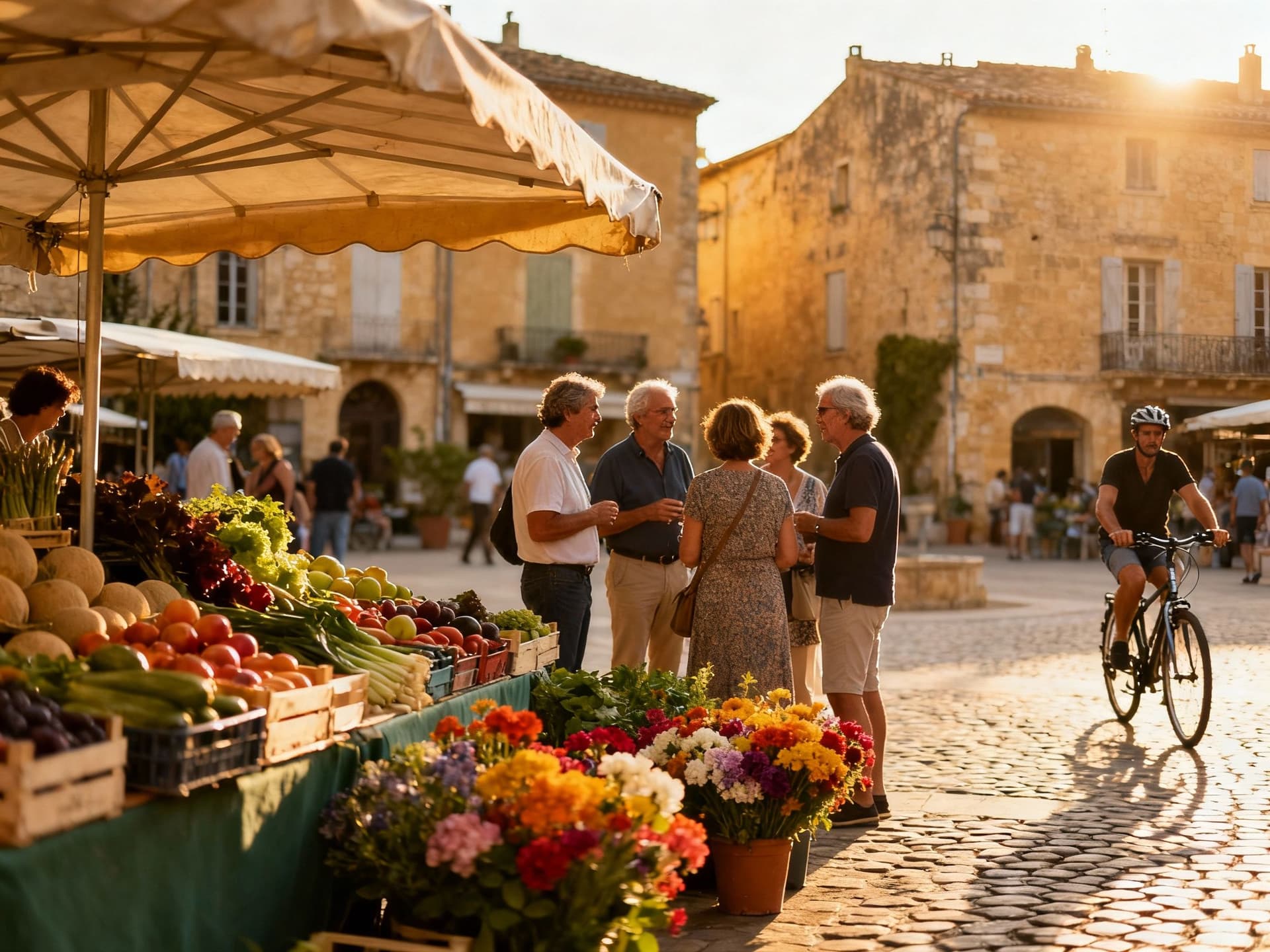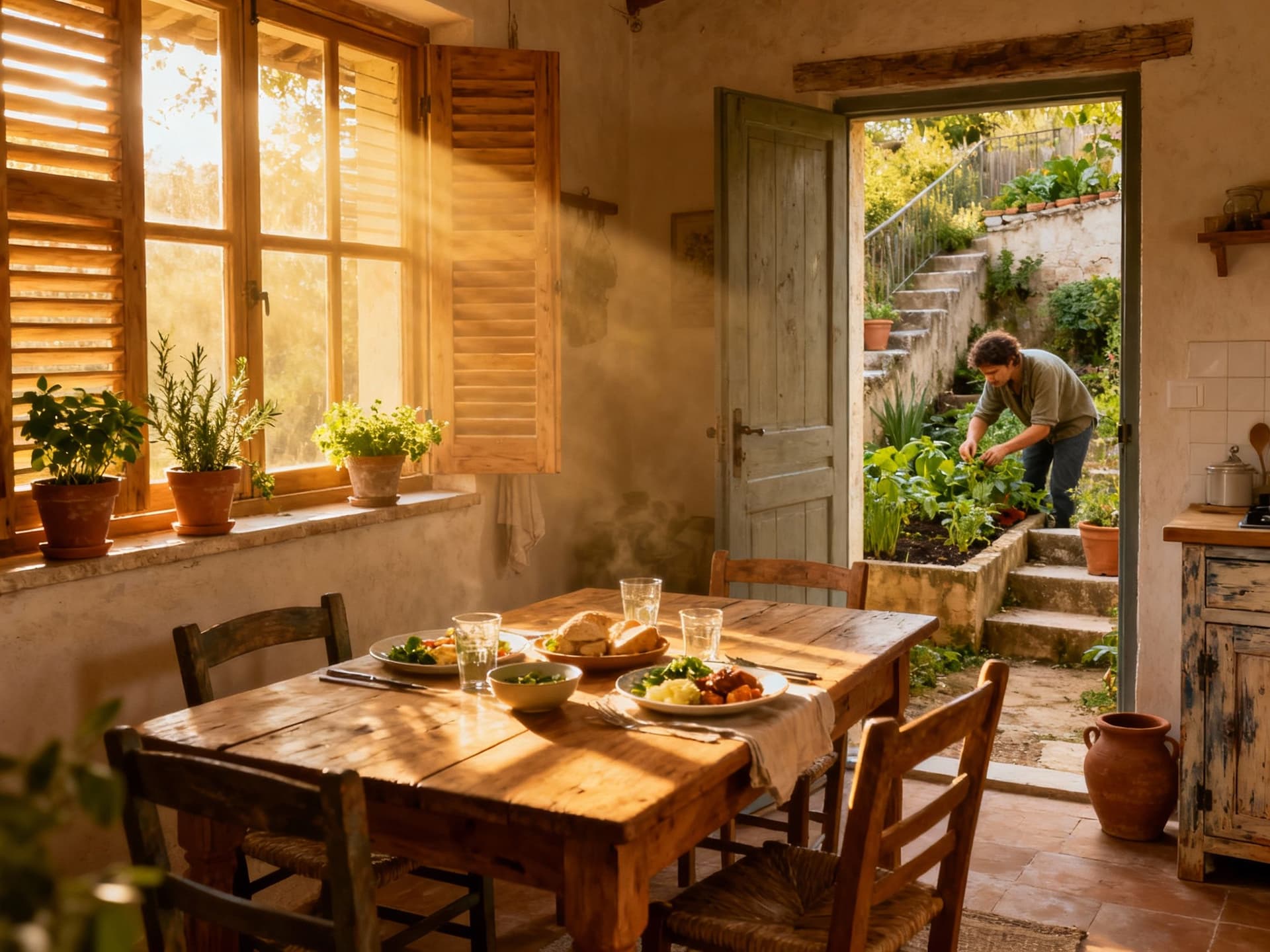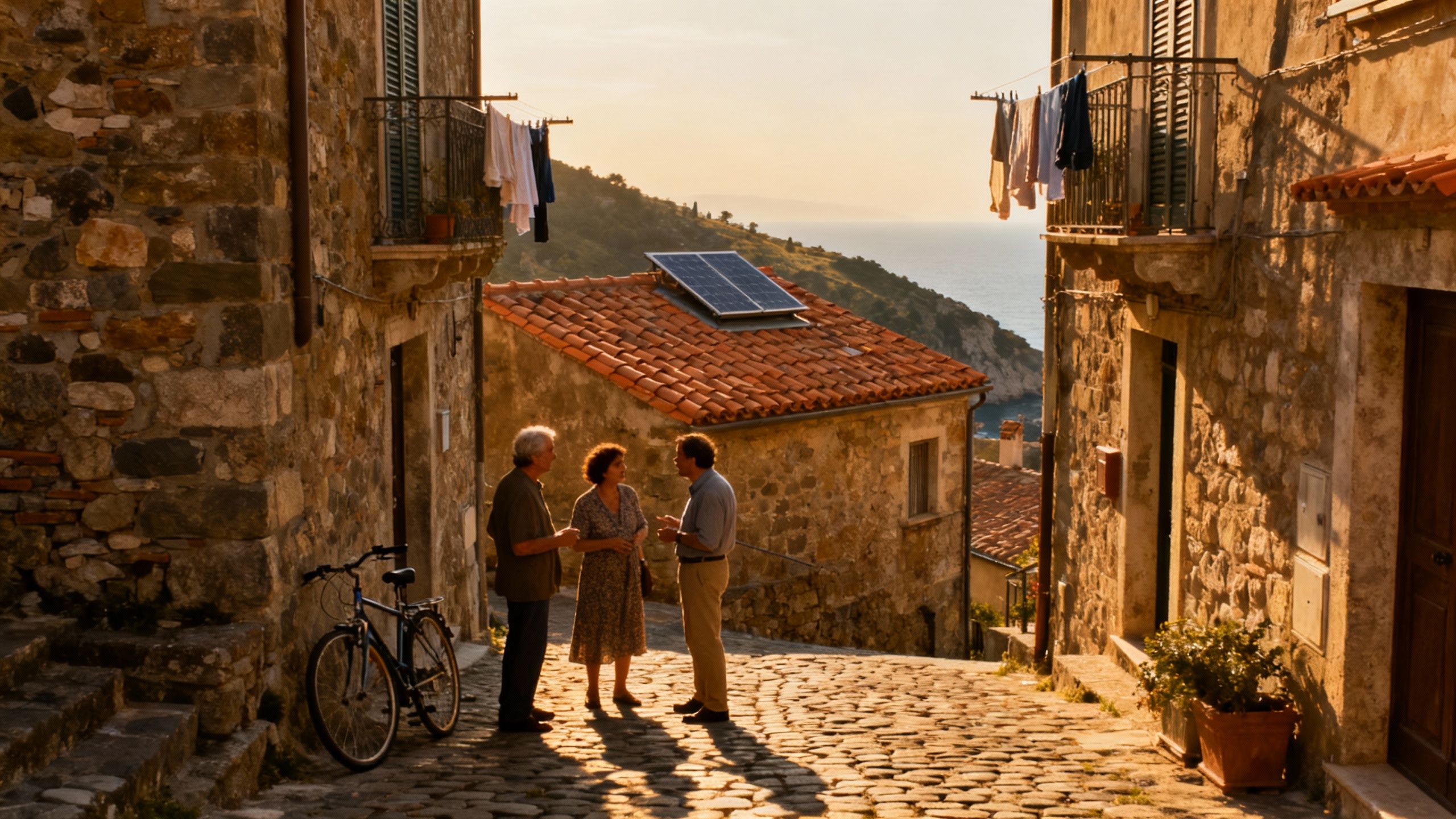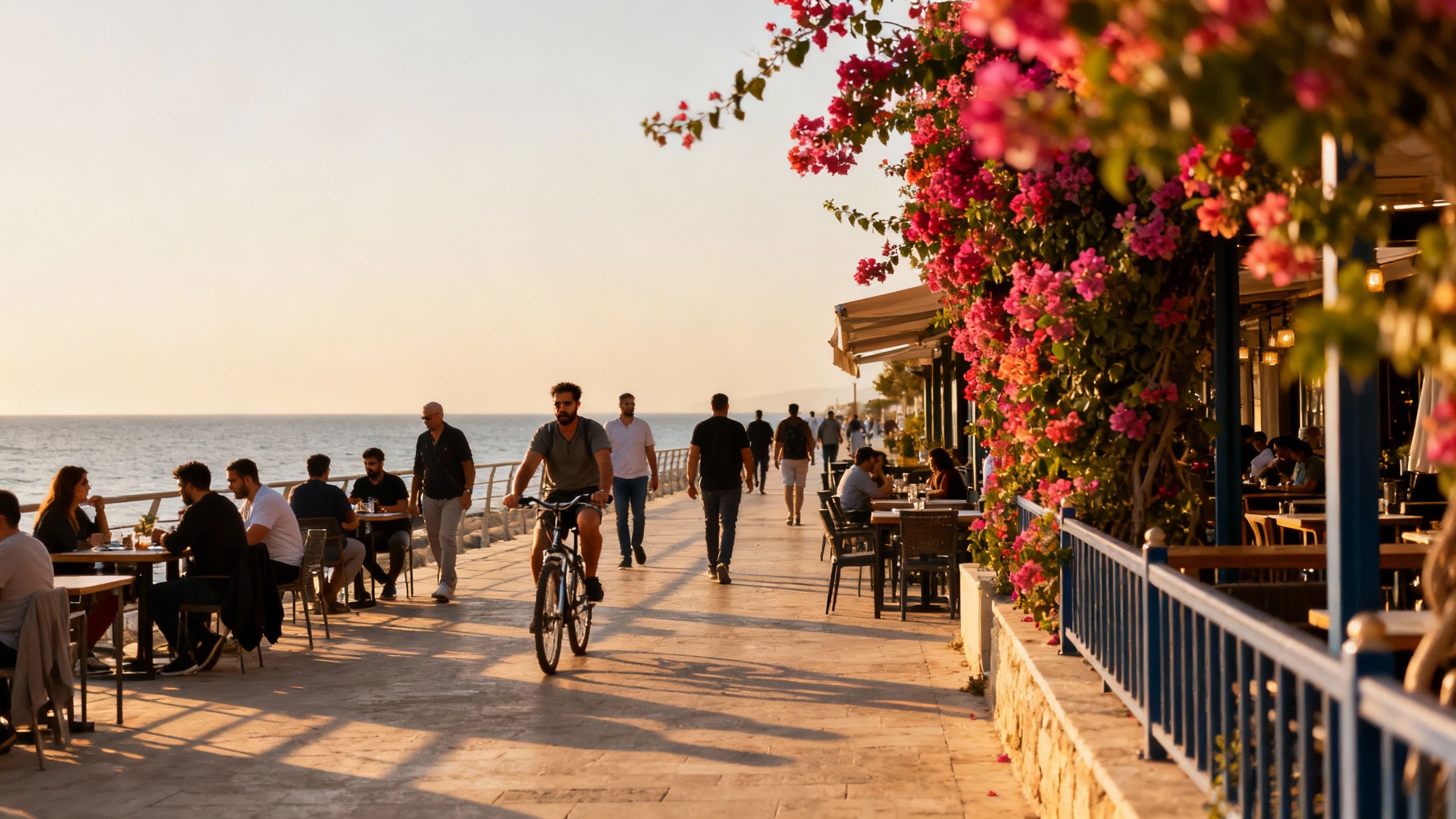Seasons, Streets & Stewardship: Buying Life in France
Fall in love with France’s seasonal rhythms — then buy with seasonal data, local experts and sustainability upgrades to make the dream durable.
Imagine an early autumn morning in France: steam rising from a fluted café cup on Rue Cler, sun soft on chestnut roofs in Aix‑en‑Provence, and a boulanger with a steady line of locals who know your name. This is the rhythm most buyers fall for first — seasons that shape daily rituals, markets that order the week, and neighbourhoods where sustainability and craft still matter. But the romance and the arithmetic can pull in different directions; understanding both is how you keep the feeling without the surprise bills. Recent Notaires figures show nuanced regional shifts that matter to international buyers and to the timing of your search.
Living the French lifestyle — seasons, streets and senses

Everyday life in France is written in small rituals: morning market runs to Marché d'Aligre in Paris or the Saturday marché in Lourmarin, late‑afternoon aperitifs along the Cours Mirabeau, and long lunches that end with a walk. The climate — maritime on the Atlantic coast, Mediterranean on the Riviera, continental inland — shapes what homes need: insulation and efficient heating in the north, shutters and cross‑ventilation in the south. Local ecology and seasonality are not accessories to life here; they are its scaffolding. Official statistics from INSEE and local notaires help explain how those seasonal patterns translate into market rhythms and practical choices for buyers.
Paris and Île‑de‑France: the city that hums year‑round
Paris moves at its own tempo: cafes and galleries keep the city alive through winter and summer alike, but property here is about tradeoffs — a small, well‑insulated apartment near Saint‑Germain or a quieter terrace in the 18th? Neighbourhoods like Le Marais, Canal Saint‑Martin and Montparnasse each offer different textures of daily life; choose the one whose morning ritual you can see yourself in. For eco‑minded buyers, look for buildings with recent thermal upgrades, communal gardens, or proximity to tram and RER lines to reduce car dependency. Local notaires report renewed buyer interest in Paris as interest rates moderate and demand returns, but micro‑location remains everything.
Provence, Dordogne and the southwest: slow seasons, fast hearts
In the Luberon, Dordogne bastides like Eymet, and coastal towns such as Biarritz, life expands outdoors when the weather allows — markets, wood‑fired ovens, and neighbourhood potagers. Summers draw tourists, but the real local life breathes in late spring and autumn, when markets are full and lanes feel private again. Many buyers are charmed by stone houses and terracotta — but older homes can carry heavy seasonal costs: heating, roof work, and water drainage are real considerations. Regional press and local notaires consistently advise commissioning seasonal inspections to understand how a property performs through winter rains and summer heat.
Making the move: what to look for in property and people

The dream — a house that frames a lavender field or a flat with a balcony view — meets reality in a few concrete choices: building fabric, energy systems, and local services. Think like a seasonal resident: will the house be comfortable in January as well as July? How easy is it to access a market, a doctor, and a reliable craftsman when something needs repair? Those practical questions determine whether your life in France will be restorative or frustrating. Work with experts who know the seasonal story of the exact village or arrondissement you’re considering.
Property styles and the life they enable
Traditional stone mas in Provence offers thick walls and passive cooling but often needs new insulation and modern heating systems; a Parisian Haussmann apartment delivers proximity and culture but may lack outdoor space. New low‑impact builds and renovated village homes can bridge the two: combine reclaimed timber, solar panels, and secondary glazing for a comfortable, lighter‑footprint life. Match the architecture to how you want to live — daily market access, a garden for growing vegetables, or a studio for a creative practice — and be ready to budget for the upgrades that turn charm into comfort.
Working with local experts who know the seasons
A local agent, an independent diagnostiqueur (energy and structural inspector), and a notaire are your seasonal translators. They tell you what a house is like in rain or drought, whether a roof needs immediate work, and how neighbours really use their properties. Agencies grounded in sustainability can point you to certifications, local craftsmen, and restoration grants, while a good notaire will unpack how purchase timing interacts with taxes and registration fees. Choose partners who listen to your lifestyle goals, not just your price range — they’ll keep you true to the life you actually want.
Insider knowledge: things expats wish they'd known
Here are the lessons people living in France tell us after six months, two years, and a decade: heating matters more than panoramic views in January; proximity to a marché and a reliable boulanger is worth a small premium; and local networks — the mairie, the neighbours, the local artisan who does roofs — are invaluable. Language is a bridge, not a wall: simple phrases open shops and friendships, while patience and curiosity win unexpected invitations. Finally, seasonal use changes value: a property that’s gorgeous in July but impossible in February may be joy for a holiday buyer, but a cost for a year‑round resident.
Cultural integration and daily rhythms
Joining local life is a slow, generous process: you’ll learn recycling days, local fete dates, and the unspoken hours when businesses close for déjeuner. Neighbourly reciprocity — exchanging garden produce, helping with harvests, attending Sunday concerts — builds the kind of social capital that makes a house feel like home. Seek out community associations, local language tandems, and craft workshops; these are where belonging grows more than in expat bubbles. Over time, the rhythms you adapt to will shape where you choose to put roots.
Long‑term lifestyle considerations
1. Consider maintenance cycles — roofs, wells, and heating — as annual budgeting items rather than one‑off surprises. 2. Think biodiversity: native planting and rainwater capture reduce upkeep and improve resilience. 3. Factor transport: seasonal ferry and train schedules can shape how connected a coastal or island property really is. 4. Balance privacy and community: a remote farmhouse gives silence but may mean fewer everyday conveniences. 5. Plan for resale through sustainable upgrades that are visible and verifiable to future buyers.
Practical next steps: start by experiencing the rhythm you want. Spend two weeks in your target town in a different season, meet a notaire and an energy diagnostiqueur, and ask a local agent about seasonal vacancy rates. Use data from national sources and local notaires to inform timing and negotiation — off‑peak viewings can give you leverage, while spring markets show inventory returns. If a property feels right both in July and January, you’ve likely found a home that will carry the life you dream of.
Conclusion: France gives you a way of living where seasons, craft and community matter as much as square metres. Let the smells, sounds and local practices guide your dream, and let careful seasonal research, trusted local professionals, and modest sustainability upgrades keep that dream durable. When you pair place‑first choices with the right team, your French home becomes both sanctuary and stewardship.
Swedish advisor who left Stockholm for the Costa Brava in 2019. Specializes in sustainable, sea‑view homes for Scandinavian buyers and green finance insights.


